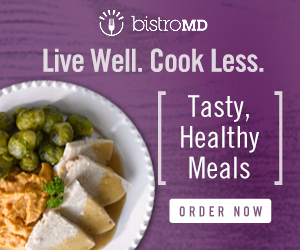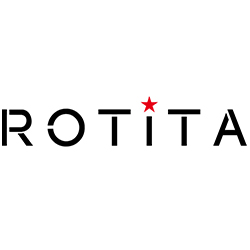In three weeks, more than 75% of the county’s total population will be fully vaccinated, health officials say — that’s even taking into account children under 12 who aren’t authorized for the shots yet. Marin has among the lowest rates of new coronavirus infections in the country, averaging under 2 cases per 100,000 people a day. On Thursday, the county reported the death of an unvaccinated resident — its first COVID-19 fatality in more than a month.
But Dr. Matt Willis, the county health officer, remains wary of lifting nearly all public health restrictions on June 15. Some of the most vulnerable residents remain in the shrinking pool of people who aren’t vaccinated. When everything from churches to grocery stores returns to full capacity and most people stop wearing masks indoors, he worries the virus will find those at risk.
“We’re leaning toward just following the state guidance. If any county is ready (for June 15), certainly it’s Marin County,” Willis said. “But I was surprised to see that there was so little by way of guidance from the state. It feels a little like going from A to Z.”
California will drop capacity and social distancing orders on its reopening day, including the mask mandate for vaccinated people in almost all settings. When the state revealed its specific plans Friday, many public health officials said they were taken aback by the near-total lifting of restrictions.
Crowds of all sizes will be allowed, inside and out, although so-called mega events of more than 5,000 people indoors will require that attendees show proof of vaccination or a negative coronavirus test. Only unvaccinated people will be required to wear face coverings indoors, but the state will not be charged with enforcement — which means that in many situations, masking may depend on the honor system.
Whether the Bay Area will revert to pre-pandemic normal overnight remains to be seen — but many local health officials hope not. Some may keep in place certain restrictions, and most others plan to ask residents to practice restraint until more people get fully vaccinated.
That could mean asking that grocery stores and other businesses keep in place mask mandates for a while, or requesting that churches and other gathering spots encourage participants to keep crowds limited and spaced apart. There’s also the question of just how comfortable most people will feel going back to business as usual in just three weeks.
“The last 14 or 15 months have been transformational. We’re still in the middle of that transition, and we’re not sure what the next normal is going to look like,” Dee Dee Myers, director of the Governor’s Office of Business and Economic Development, said in a news briefing last week. “This is going to be in progress for quite some time.”
Most Bay Area counties said they intend to adopt the state’s reopening plan entirely, even if officials have reservations. A few counties haven’t yet committed. Several say they expect some workplace restrictions — including indoor masking — ordered by the state occupational safety board to remain in place.
They’re also awaiting more guidance from the state for certain high-risk settings like hospitals, jails and shelters. And they expect more recommendations to come for families with young children who can’t be vaccinated yet, and who may face a long summer wondering how best to keep kids safe while everyone around them drops their guard.
San Francisco officials said they would reveal their own reopening plans sometime this week. In previous interviews, officials have seemed especially hesitant about allowing big crowds, such as for July 4 fireworks celebrations along the waterfront.
Reopening to a large degree comes down to a shift in responsibility — from government and health authorities to businesses and individuals, public health experts say. And for the most part, even officials like Marin’s Willis who are feeling some concern say California is probably ready to move into this chapter of the pandemic.
“Essentially what the governor is saying is it’s on us,” said Dr. Kirsten Bibbins-Domingo, vice dean for population health and health equity at UCSF. “Given that California has the lowest rate of community transmission in the country, and we have among the highest vaccination rates, I think that there’s strong rationale for reopening fully.”
That said, she shares concerns many public health officials have expressed around vaccine equity. Although California has overall high vaccination rates — 61% of the eligible population is at least partially vaccinated — uptake hasn’t been equal. About 60% of Black and Latino residents are not vaccinated at all, compared with 42% of white residents.
That means when the state fully reopens, Black and Latino communities that already have had a higher burden of disease will be at greater risk once again. Counties should focus on those communities over the next three weeks and get as many of those residents vaccinated as they can, public health experts say.
“We need to lower the bar as much as possible — knock on doors, make it easy for employees to get time off to get vaccinated, and for recovery if they have side effects. Making sure these vaccination efforts are available not just during business hours, but weekends,” said Dr. Maria Garcia, a UCSF physician who focuses on health disparities.
“We have a very effective vaccine,” Garcia said. “At this point, any death from COVID would be an excess death.”
Local public health officials mostly have echoed Garcia’s agenda for reaching vulnerable communities. They’ve shifted away from mass vaccination sites to mobile operations that bring shots to neighborhood hangouts like schools and shopping centers. They are indeed knocking on doors.
“Every couple weeks matters a lot right now” as far as increasing vaccination rates, said Dr. Curtis Chan, deputy health officer for San Mateo County.
He’s urging residents to maintain indoor masking past June 15, to give the county more time to vaccinate hard-hit communities. He’s also urging businesses to keep requiring masking of their employees and customers.
Several national chains — including Target, Costco and Trader Joe’s — have said they won’t require vaccinated customers to wear masks in states that drop mandates. But public health experts along with retails workers worry that unvaccinated customers will also stop wearing masks and put themselves and others at risk.
Stores “still have the ability to protect workers and protect shoppers after June 15,” even if it’s just for another month or two, Chan said. “Wearing masks indoors should be a collective approach, a social compact, while we get everyone vaccinated.”
Similarly, Willis said he’s planning to meet with churches and other groups in Marin to talk about how they can protect people once the state reopens. That may mean asking them to encourage face coverings, especially for high-risk groups like older people or families with young children.
“Our concerns about faith-based gatherings is we know that demographically, some are more vulnerable groups,” Willis said. “They’re gathered indoors, they’re singing. And they’re often together for an hour or more. So there’s risk there. But that risk is going to be taken on by that congregation and those individuals, and not controlled by the local health department.”
Erin Allday is a San Francisco Chronicle staff writer. Email: eallday@sfchronicle.com Twitter: @erinallday


